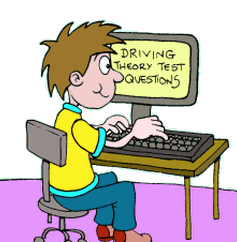Using emergency telephones
There are emergency telephones along motorways. There are telephones that occur roughly once per mile along the motorway which are connected to the emergency services.
There are also blue and white market posts every 100 metres or so that let you know the direction of the nearest emergency telephone.
If you want to use these because for instance you've broken down then when you use the phone you get connected straight through to the police. You will need to let them know where you are - there is a number on the telephone box and they can then know precisely where you are in order to provide assistance if necessary.
Note that it is illegal to stop in the hard shoulder, unless it is an emergency. Occasionally with hard shoulders you will see it being used as a lane where is roadwords going on in the other lanes, but for general purposes you should stay out of them. They will often be full of rubber and pieces of tyre that have come off cars so are not great for your car to drive on either.
Related Articles...
Vehicle's registration certificate
A vehicle has a document called a V5C, and this is the registration certificate for the vehicle. However this document by itself is not alone proof that the person selling you a vehicle actually...
Rules for learner drivers
The minimum ages and restrictions vary from one type of vehicle to another.
When you are learning to drive, you must ensure that the vehicle you are learning to drive in is roadworthy and also...
What's the point of the theory test?
The official theory test is a relatively recent addition to the driving test, and has evolved and become more comprehensive over time. For many of us who ask our parents about the driving test,...
How to pass the hazard perception test
First you need to understand just what a hazard is. Broadly, it is any element that can introduce risk into the driving scenario.
There are various different types of hazard that are...
Cost of a driving theory test
If you are learning to drive a car in the UK, then there is not just the practical test to think about.
You must also pass a theory test in order to be able to take the driving practical test...
Motorway Driving Tips
Driving on a motorway for the first time can be both exciting and a little daunting - exciting as it is something new whilst daunting as you won't have experienced driving on a motorway before...
The risk of accidents - some statistics
No-one wants to think that they will be involved in an accident, but being aware that an accident could happen to you and the statistics is important. Accidents happen to ordinary people, so anyone...
The automatic car explained
In most cases, you will learn to drive with a car that has gears in the United Kingdom.
However there are people who prefer to learn in an automatic car, and there are various driving schools...
More on Motorway Driving
Signs that let you know there is a motorway ahead are rectangular, and they have a green background. This shows that they are information signs on a primary road.
The part with the reference...
Road position and large vehicles
In a car there are of course blind spots, but as soon as you drive a lorry you realise how significant the blind spots are for those vehicles.
For one simple thing even with vans you can't...
Back to home page of driving theory test questions

